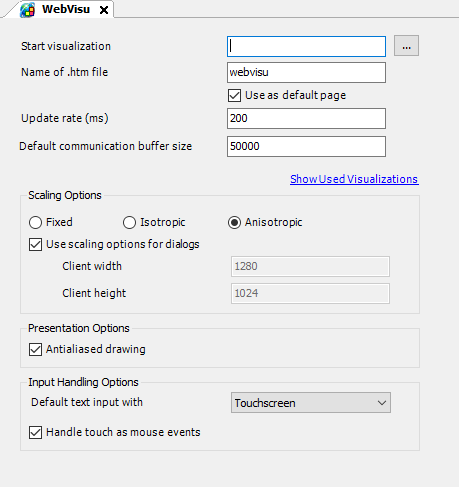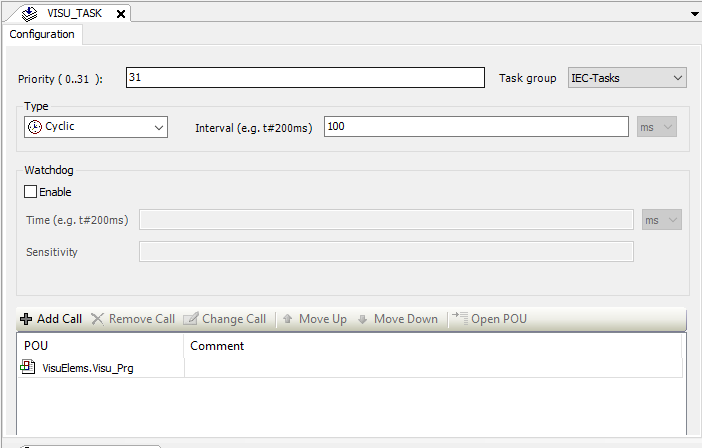Basic questions:
- What is the fastest possible update time of values in e.g. WebVisu?
- Is there a general empirical value for the update time of 'VISU_TASK'?
- How does the system behave if the update time is set to 'only' 50 ms?
- Are higher refresh time over 200ms useful to reduce system load?
Answers:
Basically, the limiting values for the CODESYS visualization are always depends on the used system itself.
The standard update times of 150-200ms in the target settings (WebVisu, TargetVisu) under the 'Update rate', and 100ms in the task processing of the 'VISU_TASK':
Explanation of the 'Visu-Update Task' rates:
The interaction of the values is as follows:
The visible update rate (without inputs) = MAX (cycle time of the VISU-TASK + update rate of the target).
If the VISU-TASK runs fast enough and inputs are pending (e.g. mouse movements), there may be faster updates here.
The default settings (update rate of 200ms, VISU_TASK of 100ms) are a compromise resulting from the following considerations:
- In the Codesys visualization, it is so that the VISU_TASK can run theoretically arbitrarily fast.
- In fact, it is only calculated if there is a "request" of a client.
- Corresponding requests arise on the one hand for cyclic updating of the visualization (redrawing of the visualization), or when inputs are executed in the visualization.
- The rate at which cyclic updates occur is configured with this property for Target and WebVisu.
- For cyclic updates, an update rate of 200ms is normally sufficient. With the double rate of the VISU_TASK a sufficiently fast reaction to inputs is usually also possible.
- With the double rate of the VISU_TASK, a sufficiently fast reaction to inputs is usually also possible.
To the combination of 'Update rate' and 'VISU_TASK':
- A (numerically) smaller update rate leads to a higher load of the controller because the visualization must be calculated more often.
- A (numerically) smaller cycle time of the VISU_TASK allows a faster reaction to inputs.
As long as no inputs are pending, the load on the system does not increase (if the update rate remains constant).
See also....
- Our Codesys Online Help (OLH) Website
- How to Debugging a Visu Exception
- How to Report problems and error messages to CODESYS


